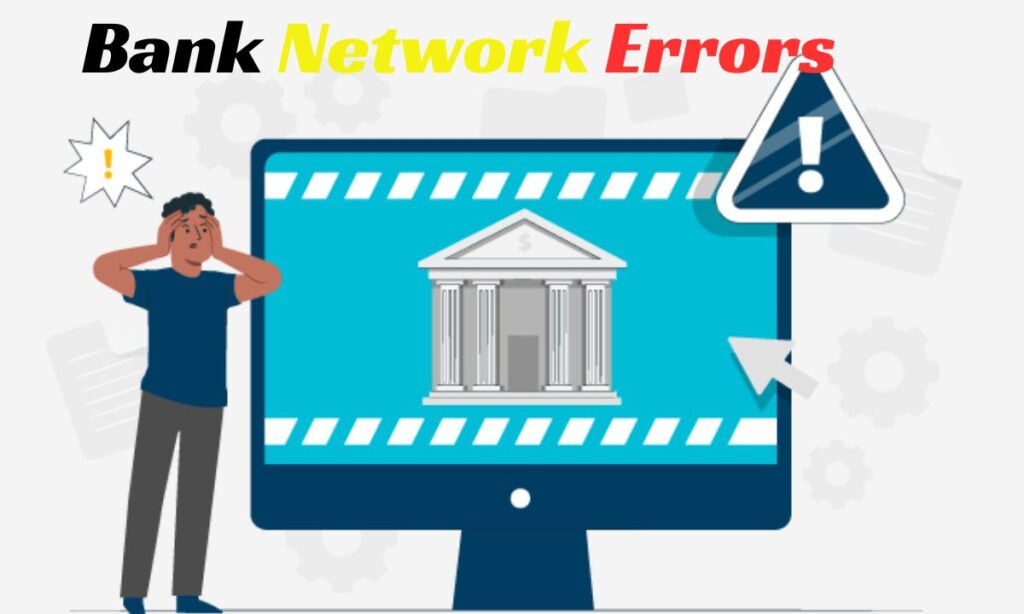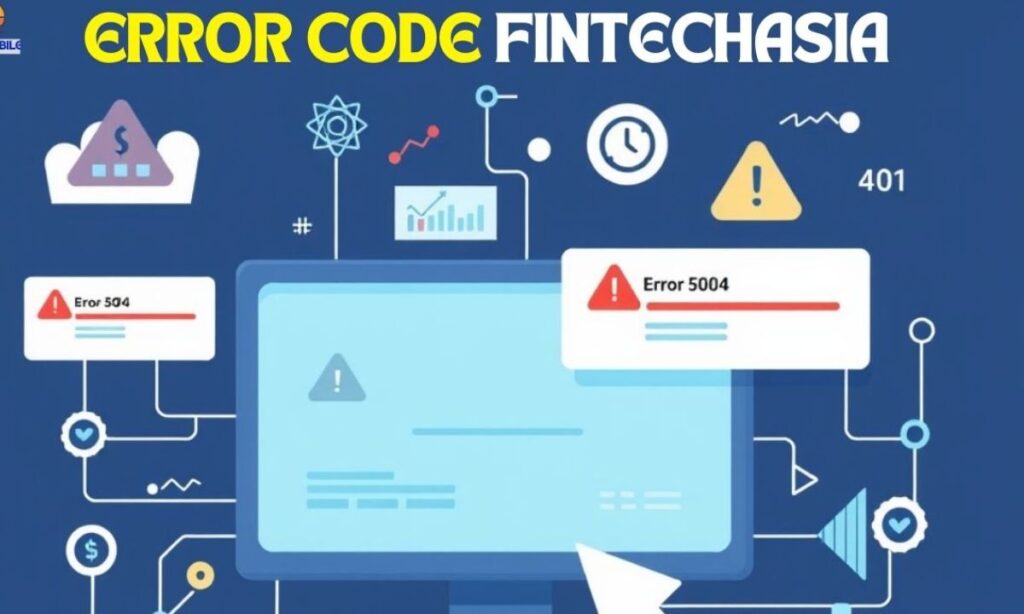In today’s rapidly evolving financial technology landscape, understanding error codes is crucial for maintaining smooth operations.
The Error Code FintechAsia represents a significant challenge in Asian financial markets, affecting millions of transactions daily.
What is the Error Code of FintechAsia?
Error Code FintechAsia represents a complex set of system failures that occur within Asian financial networks.
These codes appear during critical payment processing operations when systems encounter unexpected issues or authentication problems.
Financial institutions use these standardized codes to quickly identify and resolve technical issues that could potentially disrupt banking services.
Key Points About Fintech Asia Error Codes
The foundation of efficient payment systems relies on understanding these vital error codes. They serve as diagnostic tools for identifying transaction failures and maintaining system integrity.
Modern banking operations depend heavily on these codes for swift problem resolution and service restoration.
Card Decline Codes
When payment processing encounters issues, specific decline codes help identify the exact nature of the problem.
These standardized codes range from insufficient funds to security concerns, enabling quick resolution of transaction issues.
Financial institutions worldwide use these codes to maintain consistent communication about card-related problems.
Local Payment Method-Specific Codes
Asian markets utilize unique error codes tailored to local payment processing systems. These specialized codes reflect regional banking practices and regulatory requirements.
Understanding these local variations helps maintain seamless operations across different Asian markets.
Bank Network Errors
Network connectivity issues frequently disrupt banking operations. These errors can affect everything from ATM transactions to online banking services.

Swift identification of network errors ensures minimal disruption to essential banking services.
API Error Codes
During system integration, API errors provide crucial information about connection problems. These technical codes help developers maintain smooth communication between different financial platforms. Regular monitoring of API errors ensures reliable system performance.
Examples of Fintech Asia Error Codes
| Error Code | Description | Cause | Platform/Method |
| “05” | Do not honor (General declined by the card issuer) | The card issuer has declined the transaction | Credit Card |
| “51” | Insufficient funds | Not enough balance in the account | Credit Card, Debit Card |
| “54” | Expired card | The card has passed its expiration date | Credit Card |
| “59” | Suspected fraud | Transaction flagged as potentially fraudulent | Credit Card |
| “91” | Issuer or switch unavailable | Connectivity issues between the bank and payment system | Credit Card, Bank Network |
| “E001” | Invalid account number | Invalid account number entered or mismatched | Local E-wallets |
| “B002” | Insufficient balance | Not enough funds in the mobile banking app | Mobile Banking Apps |
Common Error Codes in FintechAsia
Showcasing different error codes in FintechAsia, their causes, and possible solutions:
| Error Code | Description | Causes | Solutions |
| Error Code 500 | Internal Server Error | Server overload, software bugs | Implement load balancing strategies and follow system maintenance best practices. |
| Error Code 404 | Page Not Found | Broken links, misconfigured servers | Regularly update and test server configurations; fix broken URLs. |
| Error Code 401 | Unauthorized Access | Security authentication failures | Enhance login protocols; implement strong authentication and user access controls. |
| Network Connectivity | Disruptions in data transmission | Unstable internet connection | Upgrade network infrastructure; ensure stable connectivity through redundant systems. |
| User Input Errors | Incorrect data entered by users | Lack of user input validation | Implement form validation to guide users in entering accurate information. |
| Integration Problems | Compatibility issues with third-party tools | Software incompatibility | Test third-party software integrations thoroughly before deploying updates. |
Fintech platforms often encounter technical issues that disrupt user experiences. Among these, Error Code 500, Error Code 404, and Error Code 401 are the most frequently reported errors.
Error Code 500: Internal Server Error
The dreaded Code 500 indicates serious system maintenance needs. This error appears when servers cannot process incoming requests effectively. Quick response to internal server errors prevents cascading system failures.
Error Code 404: Page Not Found
When users encounter Error 404, it signals broken links in the financial system. This error directly impacts user access to critical services. Regular system audits help prevent these navigation errors.
Error Code 401: Unauthorized Access
Authentication failure triggers Error 401 during security verification. This crucial security measure protects against unauthorized access attempts. Modern financial systems implement multiple authentication layers to prevent these errors.
Causes of Error Code FintechAsia
Multiple factors contribute to FintechAsia error occurrences. Understanding these root causes enables effective prevention strategies. Regular system analysis helps identify potential trigger points.

Network Connectivity Issues
Poor network connectivity severely impacts financial services reliability. Connection problems can interrupt critical transaction processing. Maintaining robust network infrastructure prevents these disruptions.
Server Overload
During peak periods, server overload can cripple financial operations. High transaction volumes stress system resources significantly. Proper capacity planning prevents devastating service interruptions.
Software Bugs and Glitches
Unexpected software issues affect system compatibility. Regular updates and patches address these technical problems. Comprehensive testing protocols identify potential software issues early.
User Input Errors
Incorrect user input frequently triggers transaction failures. Robust validation systems help prevent these common errors. Clear user guidelines reduce input mistake frequency.
READ THIS BLOG: FTAsia Trading ECommerce Tips for Success in Online Business
Integration Problems
Complex system integration issues often lead to service disruptions. Regular compatibility testing ensures smooth operations between different platforms. Proper integration protocols prevent costly service interruptions.
Troubleshooting Error Code FintechAsia
Effective error resolution requires systematic troubleshooting approaches. Quick problem identification ensures minimal service disruption. Regular system monitoring prevents recurring issues.
System Checks and Maintenance
Scheduled system maintenance prevents major operational problems. Regular diagnostic checks identify potential issues early. Preventive maintenance reduces unexpected service disruptions.
Load Balancing
Effective load distribution prevents damaging server overload. Modern balance mechanisms ensure consistent system performance. Continuous monitoring maintains optimal resource distribution.
Quality Assurance and Testing
Comprehensive testing ensures reliable system operation. Regular quality checks prevent unexpected service disruptions. Thorough testing protocols identify potential problems before they affect users.
Enhancing User Interface
Intuitive interfaces significantly reduce user-related errors. Clear instructions prevent common user input mistakes. Regular interface updates improve overall user experience.
Impact of Error Code FintechAsia on User Experience
Error codes significantly affect customer satisfaction and trust. Quick error resolution maintains service quality standards. Regular system improvements enhance overall user experience.
Preventive Measures for Error Code FintechAsia
Effective prevention requires proactive system management. Regular monitoring identifies potential issues early. Swift response protocols prevent extended service disruptions.
Frequently Asked Questions
How quickly should Error Code FintechAsia be addressed?
Critical errors require immediate attention, typically within 15-30 minutes of detection.
What causes most transaction failures in Asian markets?
Network connectivity issues and server overload account for 60% of transaction failures.
Can user input errors be prevented completely?
While impossible to prevent all user errors, strong validation systems can reduce them by 85%.
How often do API errors occur in financial systems?
API errors typically occur in 2-3% of total transactions, requiring regular monitoring.
What role does system maintenance play in error prevention?
Regular maintenance reduces error occurrence by up to 75% and extends system lifespan.
Conclusion
The comprehensive understanding of Error Code FintechAsia plays a vital role in maintaining efficient financial services. Regular system maintenance combined with proactive monitoring creates a robust defense against common issues. Swift problem resolution ensures reliable financial operations for millions of users. Implementing proper preventive measures significantly reduces error occurrence rates. Continuous system improvement and user education enhance overall service quality and reliability in the Asian financial market.














